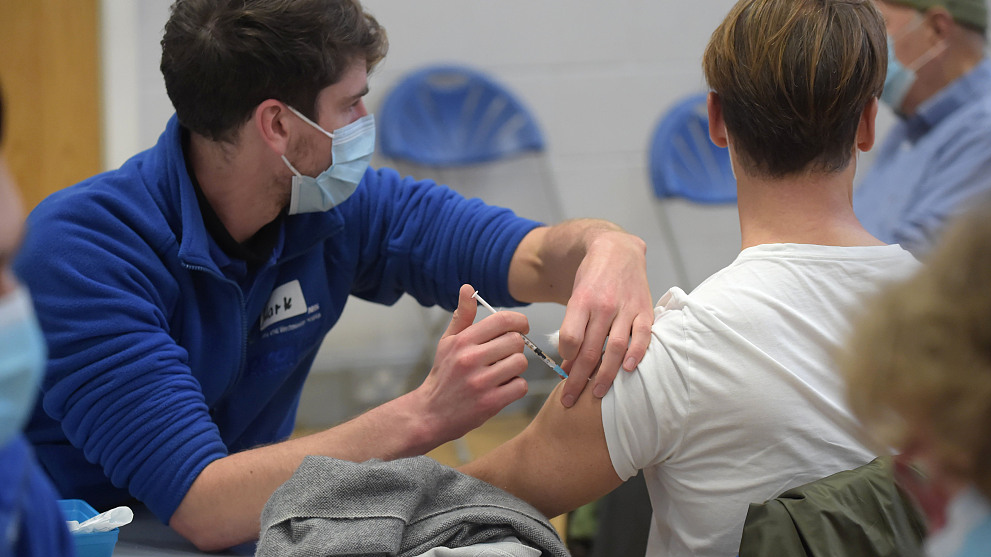Stow Health: Promoting Mental Wellness through Stow Health

Introduction To Stow Health
Stow Health summarizes the holistic approach towards maintaining well-being, encompassing physical, mental, and emotional health. It’s about achieving a harmonious balance in all aspects of life to optimize overall wellness. From physical fitness to mental resilience, nutrition, and community engagement, Stow Health is a comprehensive concept that emphasizes proactive measures for a healthier and more fulfilling life.
In this guide, we’ll delve into the various dimensions of Stow Health, exploring its significance, strategies for implementation, and its profound impact on individuals and communities alike.
Understanding Stow Health Services
- Stow Health provides comprehensive primary care and medical services for individuals of all ages, focusing on preventive care, health maintenance, and early intervention for acute and chronic conditions.
- It offers mental health support such as counseling, therapy, and psychiatric services to address mental health challenges such as depression, anxiety, and stress management.
- It provides education and resources to promote healthy eating habits, personalized dietary plans, and nutritional counseling for individuals with specific health concerns or goals.
- They offer exercise classes, personal training, and wellness programs aimed at improving physical fitness, strength, flexibility, and cardiovascular health.
- They Conduct workshops, seminars, and community outreach initiatives to raise awareness about preventive health measures, disease management, and lifestyle modifications.
- They Develop comprehensive care plans for individuals with chronic conditions such as diabetes, hypertension, and heart disease, focusing on symptom management, medication adherence, and lifestyle modifications.
- They Integrate holistic approaches such as acupuncture, chiropractic care, massage therapy, and mindfulness practices to complement traditional medical treatments and promote overall well-being.
- They Collaborate with local organizations, schools, and businesses to implement health promotion initiatives, disease prevention campaigns, and support networks for vulnerable populations.
See Also: Signal Processing in Healthcare
Importance of Stow Health in Daily Life
- Stow Health encompasses physical, mental, and emotional aspects of health, contributing to overall well-being. Prioritizing Stow Health ensures a balanced and fulfilling life.
- By adopting Stow Health practices, individuals can prevent illnesses, injuries, and chronic conditions. Regular exercise, a nutritious diet, and stress management techniques are integral to preventive care.
- Stow Health directly impacts the quality of life. When individuals prioritize their health, they experience higher energy levels, improved mood, better sleep, and enhanced cognitive function, leading to a more fulfilling lifestyle.
- Investing in Stow Health can increase longevity and reduce the risk of premature death. Healthy lifestyle choices, such as regular exercise and nutritious eating habits, contribute to a longer, healthier life.
- Stow Health is linked to increased productivity and performance in daily activities. When individuals are physically and mentally healthy, they are better equipped to handle challenges, manage stress, and achieve their goals.
- By preventing diseases and adopting healthy habits, individuals can reduce healthcare costs associated with medical treatments, hospitalizations, and medications. Stow Health promotes cost-effective healthcare by emphasizing preventive care and early intervention.
- Stow Health fosters resilience, enabling individuals to cope with adversity, stress, and life challenges more effectively. A strong foundation of physical and mental well-being equips individuals with the tools to navigate difficult situations with greater ease.
- Stow Health contributes to positive relationships with oneself and others. When individuals prioritize their health, they are better able to engage in meaningful connections, communicate effectively, and support others in their journey towards well-being.
Holistic Approach To Stow Health
- Physical Health focuses on maintaining a healthy body through regular exercise, proper nutrition, adequate sleep, and preventive healthcare practices. It also includes attending to physical ailments and seeking medical care when necessary.
- Mental and emotional health are essential components of Stow Health. This involves managing stress, practicing mindfulness and relaxation techniques, fostering positive relationships, and seeking support when facing challenges or mental health concerns.
- Social health (social connections and relationships) play a significant role in Stow Health. Nurturing supportive friendships, family bonds, and community engagement contribute to overall well-being. It involves communication, empathy, and a sense of belonging.
- Spiritual health encompasses finding meaning, purpose, and connection to something greater than oneself. This can be through religious practices, meditation, nature, art, or other avenues that foster inner peace and alignment with personal values.
- Environmental health includes factors such as air quality, access to green spaces, and exposure to toxins that impact Stow Health. Adopting eco-friendly habits, advocating for environmental sustainability, and spending time in nature promote a healthier environment and, consequently, healthier living.
- Cultural Health entails Recognizing and honoring cultural diversity and traditions, which contributes to Stow Health. This involves respecting different beliefs, practices, and perspectives while promoting inclusivity, equity, and cultural sensitivity in healthcare and community settings.
- Lifestyle choices, including diet, exercise, sleep habits, and stress management, significantly influence Stow Health outcomes. Adopting healthy habits and making sustainable lifestyle changes are integral to achieving holistic well-being.
- Prioritizing Self-Care Practices is essential for Stow Health. This includes setting boundaries, practicing self-compassion, engaging in activities that bring joy and fulfillment, and making time for relaxation and rejuvenation.
Promoting Mental Wellness through Stow Health
- Regular physical Activities are not only beneficial for physical health but also promote mental wellness. Physical activity releases endorphins, neurotransmitters that improve mood and reduce stress and anxiety.
- A balanced diet rich in nutrients supports brain health and can positively impact mood and cognitive function. Encouraging healthy eating habits as part of Stow Health promotes mental wellness.
- Stress management techniques such as mindfulness, meditation, deep breathing exercises, and progressive muscle relaxation can help individuals cope with stressors more effectively, enhancing mental resilience.
- Adequate sleep is crucial for mental well-being. Promoting good sleep hygiene practices, such as maintaining a regular sleep schedule and creating a restful sleep environment, supports optimal mental health.
- Social support is essential for mental wellness. Encouraging meaningful social connections, fostering supportive relationships, and participating in community activities can alleviate feelings of loneliness and isolation.
- Practicing mindfulness and meditation cultivates awareness, reduces rumination, and promotes emotional regulation, leading to greater mental clarity and well-being.
- Promoting mental wellness also involves reducing the stigma surrounding mental health issues and encouraging individuals to seek help when needed. Access to mental health resources, counseling services, and support groups can facilitate early intervention and treatment.
- Encouraging a healthy work-life balance is essential for mental wellness. Promoting boundaries, time management skills, and stress-reduction strategies in the workplace can prevent burnout and support overall well-being.
- Engaging in activities that challenge the mind, such as learning new skills, puzzles, or creative pursuits, promotes cognitive function and mental wellness.
- Encouraging self-compassion and self-care practices is crucial for mental wellness. Helping individuals prioritize their needs, set boundaries, and practice self-care routines fosters resilience and emotional well-being.
Physical Fitness and Stow Health
- Regular physical activity, such as aerobic exercises like running, swimming, or cycling, improves heart health by strengthening the heart muscle, lowering blood pressure, and reducing the risk of cardiovascular diseases.
- Incorporating strength training exercises, such as weightlifting or bodyweight exercises, promotes muscle strength, endurance, and bone density, reducing the risk of osteoporosis and frailty.
- Physical fitness helps individuals maintain a healthy weight by burning calories, increasing metabolism, and building lean muscle mass. Managing weight effectively contributes to overall health and reduces the risk of obesity-related diseases.
- Exercise releases endorphins, neurotransmitters that promote feelings of happiness and reduce stress and anxiety. Regular physical activity also improves mood, boosts self-esteem, and enhances cognitive function, contributing to mental wellness.
- Physical fitness increases energy levels, improves stamina, and enhances overall vitality, enabling individuals to engage in daily activities with greater ease and enjoyment.
- Engaging in regular physical activity can improve sleep quality and duration, leading to better restorative sleep and enhanced overall well-being.
- Moderate exercise has been shown to boost the immune system, reducing the risk of infections and chronic diseases. Physical fitness supports immune function, keeping individuals healthier and more resilient.
- Regular physical activity is associated with increased longevity and a higher quality of life. Staying physically active throughout life reduces the risk of premature death and enhances overall well-being in later years.
- Participating in group fitness activities or sports promotes social interaction and fosters a sense of community, contributing to mental and emotional well-being.
- Physical fitness reduces the risk of various chronic diseases, including type 2 diabetes, certain cancers, and stroke. Incorporating regular exercise into daily life is a key preventive measure for maintaining Stow Health.
Nutrition and Stow Health
- A balanced and nutritious diet provides essential nutrients, vitamins, and minerals necessary for overall physical health. Nutrient-dense foods support optimal organ function, promote healthy growth and development, and reduce the risk of chronic diseases such as heart disease, diabetes, and certain cancers.
- Proper nutrition fuels the body, providing the energy needed for daily activities, exercise, and mental tasks. Consuming a balanced diet with adequate carbohydrates, proteins, and healthy fats helps maintain stable energy levels throughout the day.
- Nutrition plays a crucial role in mental health and cognitive function. Certain nutrients, such as omega-3 fatty acids, vitamins B6 and B12, and folate, are essential for brain health and mood regulation. A diet rich in fruits, vegetables, whole grains, and lean proteins supports mental wellness and reduces the risk of mood disorders such as depression and anxiety.
- The gut microbiome, composed of trillions of bacteria and other microorganisms, plays a significant role in overall health. A balanced diet with plenty of fiber-rich foods, probiotics, and prebiotics promotes a healthy gut microbiome, supporting digestion, nutrient absorption, and immune function.
- Nutrition is a key factor in weight management and body composition. Consuming a diet high in fruits, vegetables, lean proteins, and whole grains while limiting processed foods and added sugars helps maintain a healthy weight and reduce the risk of obesity-related diseases.
- A nutritious diet is associated with a lower risk of chronic diseases such as type 2 diabetes, hypertension, and cardiovascular disease. Antioxidant-rich foods, such as fruits and vegetables, help combat inflammation and oxidative stress, reducing the risk of age-related diseases.
- Research suggests that a healthy diet is linked to longevity and a lower risk of premature death. Eating a variety of nutrient-rich foods, staying hydrated, and practicing portion control contribute to overall health and longevity.
- Proper hydration is essential for Stow Health. Water supports numerous bodily functions, including temperature regulation, nutrient transport, and waste elimination. Maintaining adequate hydration levels contributes to overall well-being and cognitive function.
Integrating Stow Health into Workplace Wellness Programs
- Offer workshops and seminars on Stow Health topics such as nutrition, stress management, physical fitness, and mental wellness. Provide employees with evidence-based information and practical tips for incorporating healthy habits into their daily routines.
- Encourage physical activity by organizing fitness challenges, exercise classes, or walking groups during lunch breaks. Provide incentives for participation and recognition for achievements to motivate employees to stay active.
- Ensure that healthy food options are available in the workplace cafeteria or vending machines. Offer nutrition workshops or cooking demonstrations to educate employees on making nutritious food choices.
- Provide resources and support for mental health, such as Employee Assistance Programs (EAPs), counseling services, or mindfulness sessions. Promote a culture of openness and acceptance around mental health issues to reduce stigma and encourage help-seeking behaviors.
- Offer flexible work arrangements, such as telecommuting or flexible hours, to support work-life balance and reduce stress. Encourage managers to be understanding and accommodating of employees’ personal needs and responsibilities.
- Organize wellness challenges focused on various aspects of Stow Health, such as steps challenges, healthy eating challenges, or stress reduction challenges. Incorporate team-based activities to foster camaraderie and social support among employees.
- Offer health screenings, assessments, and biometric measurements to help employees track their progress and identify areas for improvement. Provide personalized feedback and recommendations based on individual health metrics.
- Create a work environment that promotes Stow Health, such as providing ergonomic workstations, access to natural light, and designated spaces for relaxation or exercise breaks. Consider implementing standing desks or walking meetings to encourage movement throughout the day.
- Encourage leadership to support Stow Health initiatives and lead by example. When leaders prioritize their own well-being and participate in workplace wellness programs, it sets a positive tone and encourages employee participation.
- Regularly evaluate the effectiveness of workplace wellness programs through employee surveys, focus groups, or health outcome data. Use feedback to make adjustments and improvements to ensure that initiatives meet the needs of employees and align with Stow Health goals.

Community Initiatives for Stow Health Awareness
- Organize workshops and seminars in community centers, libraries, or local schools to educate residents about Stow Health principles, including nutrition, physical fitness, mental wellness, and disease prevention.
- Offer free or low-cost fitness classes, such as yoga, tai chi, or group exercise sessions, in public parks or recreational facilities. These programs provide opportunities for community members to engage in physical activity and socialize with neighbors.
- Establish community gardens where residents can grow their own fruits and vegetables. Community gardens promote healthy eating habits, physical activity, and social connections among participants.
- Create walking or biking trails in neighborhoods or green spaces to encourage outdoor physical activity. Install signage with information about the benefits of walking or biking for Stow Health.
- Partner with local chefs or nutritionists to offer healthy cooking classes that teach residents how to prepare nutritious meals using affordable ingredients. These classes empower individuals to make healthier food choices for themselves and their families.
- Facilitate support groups and peer networks for individuals facing common health challenges, such as weight management, chronic disease management, or mental health issues. These groups provide encouragement, motivation, and a sense of community for participants.
- Organize health fairs or expos where community members can access free health screenings, consultations with healthcare professionals, and information about local Stow Health resources and services.
- Host community clean-up events to improve the local environment and promote physical activity. Cleaning up parks, beaches, or streets not only enhances the aesthetic appeal of the community but also provides opportunities for residents to engage in physical activity while making a positive impact.
- Launch public awareness campaigns through local media outlets, social media platforms, and community bulletin boards to raise awareness about Stow Health issues and promote healthy behaviors.
- Collaborate with local organizations, businesses, and government agencies to coordinate Stow Health initiatives and leverage resources for maximum impact. By working together, community stakeholders can address health disparities and promote equity in access to Stow Health resources and services.
Future Trends in Stow Health Technologies
- Continued innovation in wearable devices, such as smartwatches, fitness trackers, and biometric sensors, will enable individuals to monitor various health metrics in real-time, including heart rate, sleep patterns, physical activity, and stress levels.
- The widespread adoption of telehealth platforms and remote monitoring technologies will facilitate virtual consultations with healthcare providers, enabling individuals to access medical advice, monitoring, and treatment from the comfort of their homes.
- The development of personalized health apps powered by artificial intelligence and machine learning algorithms will provide tailored recommendations for nutrition, exercise, sleep, and stress management based on individual health data and preferences.
- Advances in genomics and precision medicine will enable personalized healthcare interventions based on individuals’ genetic makeup, allowing for targeted prevention, diagnosis, and treatment of diseases.
- The emergence of digital therapeutics, such as mobile apps and online programs, will offer evidence-based interventions for managing chronic conditions, mental health disorders, and lifestyle-related health issues.
- Virtual Reality (VR) and Augmented Reality (AR) technologies will be increasingly utilized for immersive experiences in healthcare, including virtual therapy sessions, pain management, rehabilitation, and medical education.
- Blockchain technology will be leveraged to enhance the security, privacy, and interoperability of health data, enabling individuals to have greater control over their personal health information and facilitating seamless data exchange between healthcare providers.
- AI-powered algorithms will play a pivotal role in medical diagnostics, drug discovery, personalized treatment planning, and population health management, leading to more efficient and effective healthcare delivery.
- Biofeedback and neurofeedback devices will enable individuals to learn self-regulation techniques for managing stress, improving focus, and enhancing mental well-being through real-time feedback on physiological and neurological parameters.
- The Internet of Things (IoT) will connect various health devices, sensors, and applications into integrated health ecosystems, allowing for seamless data sharing, interoperability, and personalized health management solutions.

Conclusion
The concept of stow health encompasses a holistic approach to well-being, addressing the interconnectedness of physical, mental, emotional, and social factors influencing health outcomes. Throughout this exploration, we’ve highlighted the importance of integrating Stow Health principles into various aspects of life, including workplace wellness programs, community initiatives, and emerging technologies.
By prioritizing Stow Health, individuals can proactively manage their health and cultivate resilience, balance, and vitality in their daily lives. From promoting physical fitness and nutritious eating habits to supporting mental wellness and fostering social connections, Stow Health empowers individuals to lead healthier, happier, and more fulfilling lives.
As we look to the future, advancements in technology, healthcare delivery, and community engagement hold promise for further enhancing Stow Health initiatives and expanding access to comprehensive health and wellness resources. By embracing innovation, collaboration, and a commitment to individual and community well-being, we can create a world where Stow Health is not just a concept but a way of life, enriching lives and transforming societies for the better.
Frequently Asked Questions (FAQs)
What is Stow Health?
Stow Health is a holistic approach to well-being that emphasizes the interconnectedness of physical, mental, emotional, and social factors influencing health outcomes. It involves proactive measures to optimize overall wellness and achieve a harmonious balance in all aspects of life.
Why is Stow Health important?
Stow Health is important because it promotes preventive care, resilience, and quality of life. By prioritizing Stow Health, individuals can reduce the risk of illness, enhance physical and mental well-being, and lead healthier, more fulfilling lives.
How can I incorporate Stow Health into my daily life?
You can incorporate Stow Health into your daily life by adopting healthy habits such as regular exercise, nutritious eating, stress management techniques, and maintaining social connections. It’s about making conscious choices that support your overall well-being.
How does Stow Health differ from traditional healthcare?
While traditional healthcare focuses primarily on treating illnesses and symptoms, Stow Health takes a proactive approach to prevent illness and promote overall wellness. It considers the whole person and addresses multiple dimensions of health, not just physical ailments.
Is Stow Health applicable to everyone, regardless of age or background?
Yes, Stow Health is applicable to everyone, regardless of age, background, or current health status. It’s about making choices that support overall well-being and fostering a culture of health and wellness in all aspects of life.
What are some examples of Stow Health practices?
Examples of Stow Health practices include exercising regularly, eating a balanced diet, getting enough sleep, practicing mindfulness or meditation, seeking social support, and managing stress effectively.


